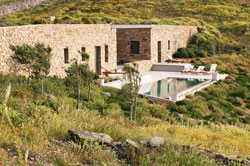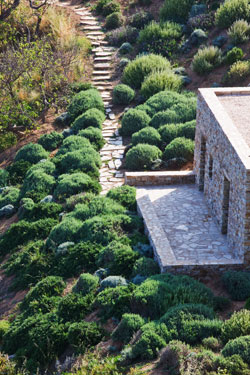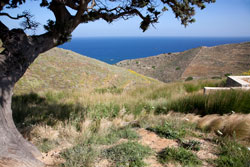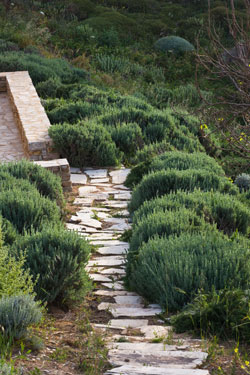Landscapes of Cohabitation
Honorable mentiondoxiadis+ – Greece | |
    | Garden in the Landscape The landscapes of the Aegean Islands emerged over the course of centuries. Agriculture and herding shaped the face of the islands. As the tourist economy has replaced traditional forms of cultivation, these cultural landscapes have been transformed as well. This project on the Greek island of Antiparos seeks to design such interventions in synthesis with the old cultural landscapes and to establish a new equilibrium between the landscape and its economic uses. An analysis of the historical and natural elements of the landscape provided the basis for the design strategy. Hills shaped like amphitheaters, seasonal streams, great juniper trees, seasonal frigana vegetation, agricultural terraces (pezoules) and dry stone walls (xerolithies) define this cultural landscape. New elements like roads, villas and terraces are designed to re-establish and extend the historically grown topography and the terraced terrain. All new elements must be integrated into this “skeleton”. For example, new roads do not zigzag up hillsides, but follow the agricultural terraces that are parallel to the hills’ contours, or the dry stone walls perpendicular to the hillside. Dense Mediterranean vegetation was planted close to the buildings, but progressively dispersed outwards to the landscape in order to allow the indigenous plants to re-establish. |
 |
Fotos:
The historically grown system of dry stone walls and agricultural terraces is the basis for contemporary structural interventions. Plantings close to the houses take their cue from Mediterranean vegetation. |
Δεν υπάρχουν σχόλια:
Δημοσίευση σχολίου